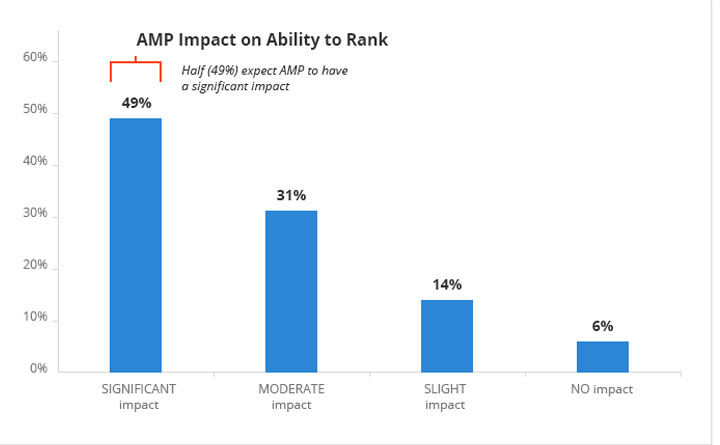
Google AMP: the right mobile format for your web pages
Full foot in mobile first. With the deployment of its open source AMP (Accelerated Mobile Pages) format, Google wants to accelerate and improve the reading experience on mobile.
While there are now more mobile users than computer users in the world, reading on smartphones and tablets is often slow and inefficient. It is on this bitter observation that Google wants to make its move.
Launched at the end of February, the AMP format makes it possible to display web pages instantly on mobile phones. We already talked about it in the article on Quanta Computing, which offers a solution to improve the loading speed of e-commerce under Magento, the link between traffic acquisition and loading time is high.
The number one search engine has therefore decided to focus on speed, knowing that more than 40% of users leave a page that takes more than 3 seconds to load.
The AMP format means full mobile compatibility on iOS and Android applications for optimal reading comfort. AMP content is distinguished by a small logo in the form of a lightning bolt that is affixed to it. They are displayed in a highly visible image carousel above the traditional mobile search results.
At the top of the page therefore, guaranteeing a significant increase in visibility. This is a godsend for brands and companies that are implementing a brand content strategy: by creating AMP articles, they will see their content, previously isolated on blogs, highlighted directly on Google, which has a massive audience.
At the end of February, AMP landed without warning on Google News, gradually rolling out to all Google properties. And the Mountain View firm intends to develop its project further, to compete with Facebook’s Instant Articles.
Google AMP: how does it work?
Without AMP, a publisher creates his HTML page on a CMS (WordPress, Magento, Prestashop or other) and then distributes it only in this format to all platforms: Facebook, Google, Twitter, Gmail, etc.
With AMP, when a content is viewed from the Google SERPs or from a technology partner (Twitter, Nuzzel, Pinterest, or LinkedIn), its AMP version is systematically called instead of the HTML page.
The acceleration of the loading time is in fact made possible by super-light HTML pages, to which is added the CDN cache system and a reduction of Javascript. The lead image and text are loaded first, instead of the normal advertising and scripts. The implementation of AMP technology would allow for a 15 to 85% increase in display speed.
The user who clicks on an AMP content is not redirected to the site where the content originated: the reading is done directly on the Google domain. However, the publisher of the content retains all advertising revenues.
Deploy AMP today to gain visibility and SEO tomorrow
More and more, Google considers the speed of page loading and the mobile-friendly aspect of a site as essential criteria for referencing.
AMP technology is in fact the equivalent of a new broadcast channel. However, it is still little known and not widely deployed. According to a study conducted by SEO PowerSuite among web professionals, 49% believe that AMP will significantly impact their ranking in mobile SERPs, but only 23% have developed it yet.
Therefore, the image carousel is only triggered under two conditions:
- If there is enough search volume
- If the number of AMP pages matching the request is sufficient
For the moment, it is only displayed on 11% of queries, which is already interesting for the ultra hot news and keywords on which many websites are already positioned in the classic search results.
Gradually, more and more publishers will deploy AMP, triggering the carousel on more and more queries. The pioneers of the AMP format will therefore secure a dominant position over their competitors in mobile search.
Proof that Google AMP is going to have an impact, the WordPress, Drupal and Joomla CMSs have already made plugins available to publishers and developers to make AMP implementation easier.
So should we move into the niche quickly? In any case, it is better not to wait for time to tell you.
Take a look:
- to the Google AMP site
- to the AMP HTML open source code on GitHub
And for those curious about how their AMP content will appear in mobile search results, Google has launched a demo tool available to all at this address: g.co/AMPdemo











Leave a Reply
You must be logged in to post a comment.